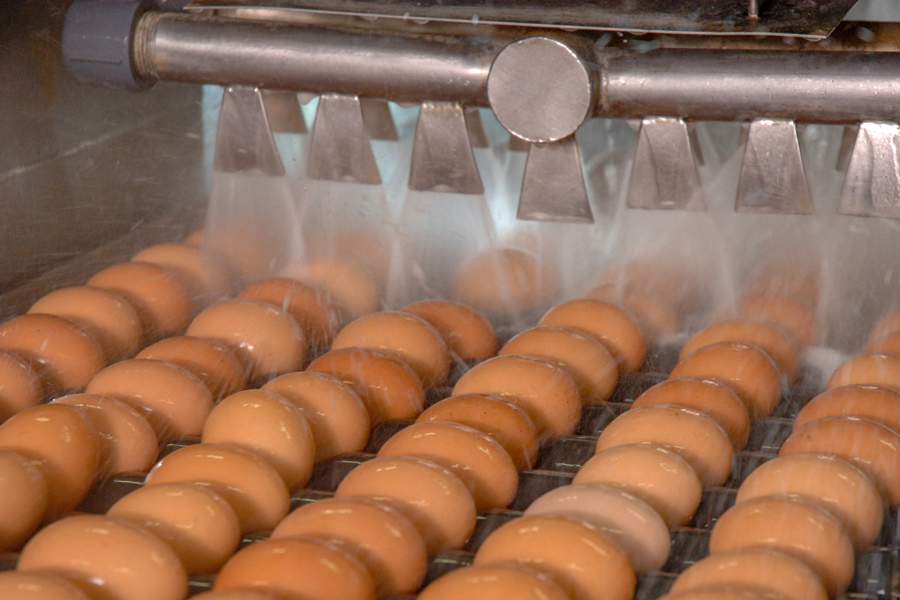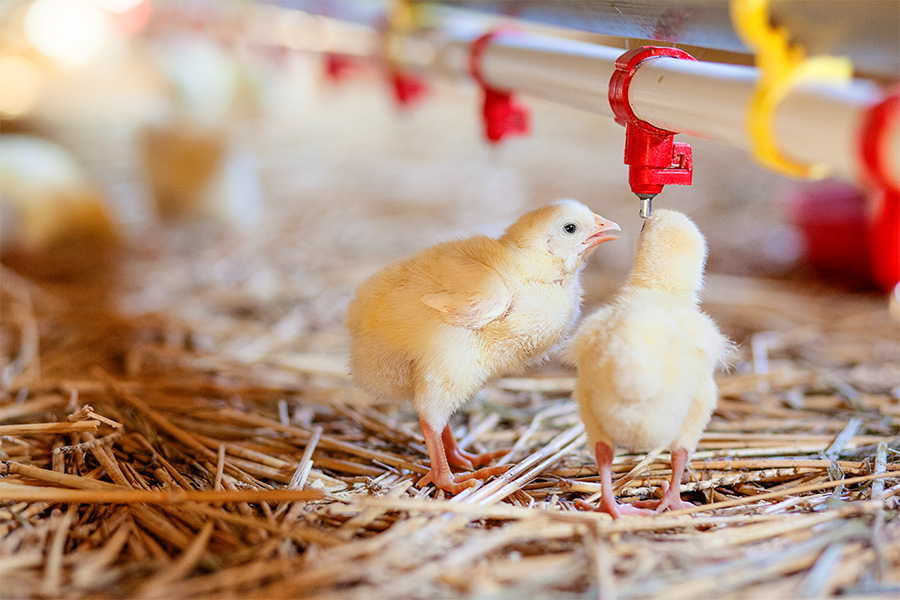Poultry
-

This publication is designed to give commercial egg processors the information they need to understand and effectively deal with the wastewater grit generated from the conveying, washing and grading of table eggs.
Casey W. Ritz and Brian H Kiepper
|
-

White striations in broiler breast meat tend to reduce customer confidence because severe white striping means that the cooked meat will be tougher than meat with low white striping. There is also higher fat content in meat with severe white striping. Consumers will not buy broiler breast meat with high fat and moderate to severe white striping because it is inferior in quality and nutritional value. This can cost the poultry industry significantly. Research has shown that this undesirable trait is particularly prevalent in broilers that have grown to a high body weight over a short period of time. Further research is needed to develop growing and feeding regimens to produce a heavier bird without changes in muscle quality, such as white striping.
Anand Mohan
|
-

Bin composting daily mortality can be a useful, cost-effective management tool when practiced correctly. However, it can be environmentally harmful if it is not managed and monitored properly. This publication shows the necessary steps to obtain a compost product from daily poultry mortality using a bin composting method.
Claudia Dunkley
|
-

This module describes the role of energy in the body, how much energy is contained in our foods, and how to correctly identify the key nutrient classes that our bodies require from the foods we eat. All of these components are related to the general makeup of a commercial poultry diet. The module is designed to be one in a series of publications to supply relevant educational content related to the poultry industry to agricultural teachers, STEM teachers, and the general public.
Justin Fowler
|
-

An Excel workbook, Nutritional Response Determination Optimization (NuRDO). has been developed to simulate the optimal number or nutrient levels and replicates per level when planning nutritional requirement studies. With NuRDO, researchers can simulate data from what they think is the real shape of the response curve. They can then run up to 1,000 simulated experiments to see the combination of levels and replications that minimize the standard error or the requirements and other parameters for the broken-line models. SK and hyperbolic models. For example, consider the BLL model with a “true” requirement (REQ) of 5.2, a maximum of 99 units, a rate constant of 18.6 and a CV of 10%:For 5 input levels and 10 reps per level, the estimated REQ ± SD is equal to 5.196±0. 106, for 10 levels & 5 reps each, the REQ is 5.231±0 .157. The workbook can be used in this manner to determine the best combination of levels and reps to improve the chances or getting the best results possible from experiments.
Gene M. Pesti
|
-

New feed ingredients are evaluated and introduced to the feed industry every year. The evaluation process is necessary and includes feeding birds different levels of the test ingredient to estimate the maximum safe level (MSL). The MSL is usually estimated with a multiple range test, ignoring the fact that this test is inappropriate for this type of feeding trials where the independent variable is continuous. This paper describes the use of the Maximum Ingredient Optimization Workbook (MIOW) in estimating the MSL and determining the optimal combination or ingredient levels and replications for most efficient experimental design of future feeding trials. The MIOW calculates the results and the related descriptive statistics (SD, SE, Cl, and R2) based on simulation and non-linear regression models (broken-line linear and broken-line quadratic models).
Gene M. Pesti
|
-

This publication outlines the information needed to develop a Comprehensive Nutrient Management Plan (CNMP) for dry poultry litter operations.
Casey W. Ritz
|
-

Water is a critical nutrient that receives little attention until a problem arises. Not only should producers make an effort to provide water in adequate quantity, they should also know what is in the water to be used in evaporative cooling systems and consumed by the birds.
Casey W. Ritz and Brian D. Fairchild
|
-

Producers need to be aware of the impacts that manure can have on water and air quality. However, management of manure and other byproducts of livestock and poultry production has important impacts on farm profitability, neighbor relations and protecting soil and water quality.
This publication covers: Farm and Homestead Maps; Manure Storage and Treatment; Nutrient Budgeting with Nitrogen and Phosphorus; Land Application of Manure and Fertilizers; Grazing Land; Pesticide and Chemical Management for Water Quality; Mortality Management; Record Keeping; Coexisting with Neighbors; Emergency Action Plans; and other resources.
L. Mark Risse and Thomas M. Bass
|